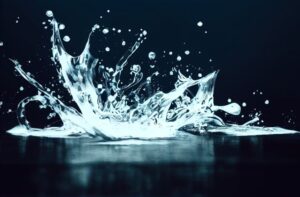What is the difference between water restoration and water mitigation?
Water damage is a common issue that many homeowners and business owners face. It can be caused by a variety of factors such as flooding, burst pipes, or leaks from appliances. In order to repair the damage caused by water, the process of water restoration or water mitigation is often necessary. Although these terms are sometimes used interchangeably, they actually refer to different stages of the water damage repair process.
(Looking for “Trusted Water Analysis“? Contact us today!)

Water mitigation is the first step in repairing water damage. It is the process of preventing further damage from occurring by taking immediate action to remove excess water from the affected area. This involves removing any standing water, drying out the area, and installing dehumidifiers to remove any remaining moisture. The goal of water mitigation is to minimize the amount of damage that occurs and to prevent the growth of mold and other harmful bacteria.
Water restoration, on the other hand, is the process of repairing the damage that has already occurred. This involves cleaning and disinfecting the affected area, repairing any structural damage that has occurred, and restoring the area to its pre-damage condition. The goal of water restoration is to return the affected area to its original state so that it is safe for occupants to use again.
In summary, water mitigation is the process of stopping further damage from occurring, while water restoration is the process of repairing the damage that has already occurred.
The process of water mitigation and water restoration can be complex and involve a variety of equipment and techniques. Here are some of the most common equipment and techniques used in water restoration:
- Water extractors: These machines are used to remove standing water from the affected area. They can be truck-mounted or portable, and they use powerful suction to remove water quickly and efficiently.
- Dehumidifiers: Once the standing water has been removed, dehumidifiers are used to remove any remaining moisture from the air. This helps to prevent mold and mildew growth, which can be harmful to occupants.
- Air movers: These machines are used to circulate air in the affected area, which helps to speed up the drying process. They work by blowing large volumes of air across wet surfaces, which helps to evaporate moisture.
- Moisture meters: These tools are used to measure the moisture content in the affected area. They are used to determine when the area is completely dry and ready for restoration work to begin.
- Disinfectants: Once the area has been completely dried out, disinfectants are used to kill any remaining bacteria or mold spores. This helps to ensure that the area is safe for occupants to use again.
In conclusion, water mitigation and water restoration are both important steps in repairing water damage. Water mitigation is the first step in preventing further damage from occurring, while water restoration is the process of repairing the damage that has already occurred. The process can be complex and involve a variety of equipment and techniques, but with the right equipment and a skilled professional, it is possible to restore your property to its pre-damage condition.

